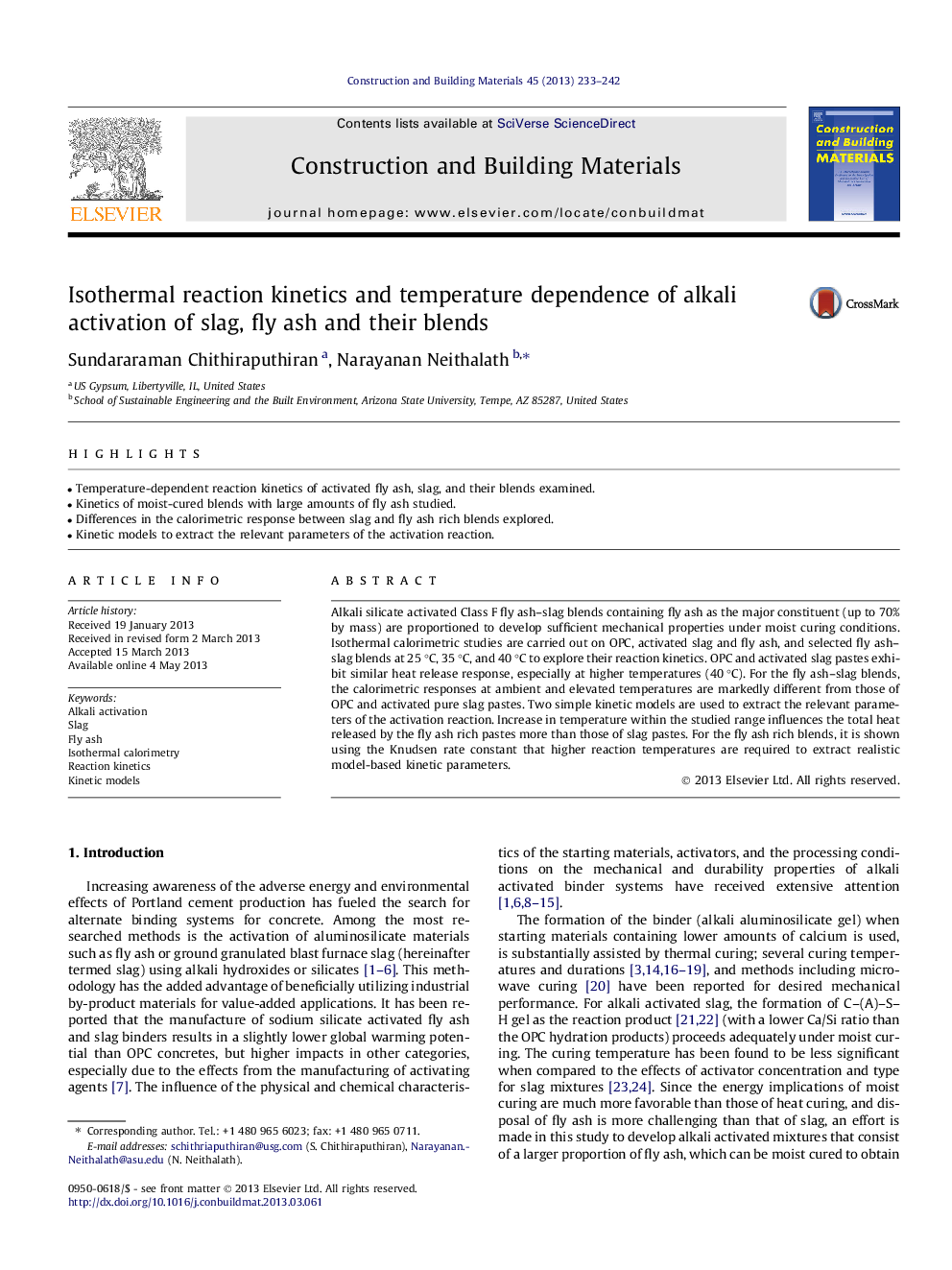| Article ID | Journal | Published Year | Pages | File Type |
|---|---|---|---|---|
| 258221 | Construction and Building Materials | 2013 | 10 Pages |
•Temperature-dependent reaction kinetics of activated fly ash, slag, and their blends examined.•Kinetics of moist-cured blends with large amounts of fly ash studied.•Differences in the calorimetric response between slag and fly ash rich blends explored.•Kinetic models to extract the relevant parameters of the activation reaction.
Alkali silicate activated Class F fly ash–slag blends containing fly ash as the major constituent (up to 70% by mass) are proportioned to develop sufficient mechanical properties under moist curing conditions. Isothermal calorimetric studies are carried out on OPC, activated slag and fly ash, and selected fly ash–slag blends at 25 °C, 35 °C, and 40 °C to explore their reaction kinetics. OPC and activated slag pastes exhibit similar heat release response, especially at higher temperatures (40 °C). For the fly ash–slag blends, the calorimetric responses at ambient and elevated temperatures are markedly different from those of OPC and activated pure slag pastes. Two simple kinetic models are used to extract the relevant parameters of the activation reaction. Increase in temperature within the studied range influences the total heat released by the fly ash rich pastes more than those of slag pastes. For the fly ash rich blends, it is shown using the Knudsen rate constant that higher reaction temperatures are required to extract realistic model-based kinetic parameters.
